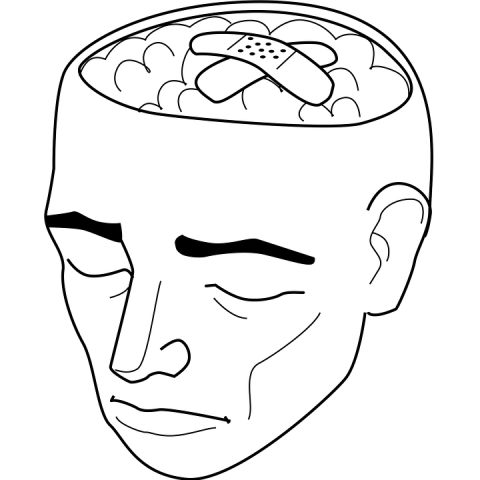A Device For Administering Drug Directly To The Brain Is To Become Neurological Game-Changer
For people who have phobias for medications and drugs, there just might be a new alternative to medicine ingestion for such phobia-stricken patients.
A new tech innovation capable of delivering tiny doses of medicine to the brain, via a miniaturised system, has been developed by MIT researchers. The new system which is as small as 1 cubic millimetre is capable of targeting medication doses to the brain which can aid the treatment of illnesses and diseases that alter specific brain circuits.

The new mechanism is quite advantageous after various research and testing, in the sense that is can treat specific brain circuit diseases without affecting the normal functioning and metabolism of the rest of the brain.
The New Mechanism
The new device comprises of various tubes which contain a needle as thin as a human hair strand. The researchers use the mechanism to deliver a variety of drugs within the brain. Precise control is achieve over how much drug is administered and the destination of the drug.

In a study carried out on rats, it was found that targeted doses of drugs which could influence the animal’s motor functions could be easily and directly delivered.
Lead author of the research, Canan Dagdeviren, who is also the LG Electronics Career Development Assistant Professor of Media Arts and Sciences, pointed out that;
“We can infuse very small amounts of multiple drugs compared to what we can do intravenously or orally, and also manipulate behavioral changes through drug infusion.”
A senior author of the paper, and Professor of the David H. Koch Institute at MIT, Robert Langer, also said;
“We believe this tiny micro fabricated device could have tremendous impact in understanding brain diseases, as well as providing new ways of delivering biopharmaceuticals and performing bio sensing in the brain.”
Essence of a targeted drug administration
Drugs such as I-dopa, used for Parkinson’s disease, and Prozac used for boosting serotonin levels in depression patients often interact with brain chemicals and are known as neurotransmitters.
Due to the fact that the drugs act throughout the brain, they tend to have side-effects. Michael Cima, a senior author on the project and an MIT Professor of engineering also said;
“One of the problems with central nervous system drugs is that they’re not specific, and if you’re taking them orally they go everywhere. The only way we can limit the exposure is to just deliver to a cubic millimeter of the brain, and in order to do that, you have to have extremely small cannulas.”
The cannulas can be fabricated into any size and length, making it usable in brains of varying sizes even the human brain.
Design of the device
The team of researchers developed a miniaturised tube for delivery of medicine called “cannula”, which is capable of targeting small regions within the brain.
Via the procedure of micro fabrication, the MIT team constructed tubes with a diameter of 30 micrometers with lengths reaching 10 centimetres. The tubes are housed within a casing of stainless steel needle having a diameter of only about 150 microns.
According to Canan Dagdeviren, the “brain-injecting” device is very robust and stable and can be placed anywhere. The cannulas were connected to pumps small enough to be implanted under the skin. With the pumps, the researchers successfully administered a drug (muscimol) in tiny doses of nanoliters to the brain region of rats, called substantia nigra, capable of controlling movement.
The drug ‘muscimol’ is known from previous studies to induce symptoms similar to those noticed in Parkinson’s disease. The similar effects that researchers were able to generate from the rats, by using the device include;
- stimulating the rats to turn in a clockwise direction continually via the use of the miniaturized delivery needle.
- halting the Parkinson’s behaviour by delivering a dose of the saline via a channel to flush the drug away.
Challenge necessitating the miniaturized device
Canan Dagdeviren pointed out that since the miniaturized delivery tool was easily customized, the mechanism can be adopted to create different channels in the future, for chemicals or light, in order to target neurological disorders like Alzheimer’s or Parkinson and tumors, etc.
Behavioural disorders which are often caused by disruptions in the way parts of the brain communicate with each other, like obsession and addiction; can be given new treatment in the future using the device.
The brain is such a complex structural organ and even if scientists are able to identify a molecule with therapeutic tendencies to treat the neural disorders, there would still be the huge problem of how to deliver the therapy to the right cells in the brain’s neuro system.
Due to this challenge with the brain’s structure, more effective ways, therapeutic methods and drugs are needed to handle and treat urgent neurological disorders.
Through this study, researchers further showed that it was also possible to integrate an electrode into the tip of the cannula. The electrode implant can help monitor electrical activity and changes after medications, and the device is now being worked on, to aid the measurement of chemical and mechanical changes which occur in the brain after treatment.
Conclusion
The research on the miniaturized device goes to provide a proof-of-concept that in large animals, a small miniaturized device can be implanted safely in the brain, in order to aid the control of electrical activity and better understand the roles of single or group neurons.
The research and its significance could impact on the various neurological diseases of the braain, such as Parkinson’s, Alzheimer’s, etc.
Image Source: Pixabay
Reference:
Thank you for your time and for reading my post.
If you found this post interesting, then kindly UPVOTE, RESTEEM and FOLLOW @rickie, for more quality posts.
You Can Check Out My Other Posts Below:
- Science Says Casual Sex is Freaking Healthy, So Do It
- Is it possible to die from laughter?
- Scientists Discover Antibacterial Properties Of Dragonfly Wings
- Meet The Fish That Sparks Fear and Attacks The Human Penis and Urethra
- Some Weird Facts About The Technology We Know And Use Today
- Biggest Discoveries of 2017 That Gives Hope For The Future

Waooooo.... If this is happens then slot if problems will really be easily solved.
Usually the problem with most route of drug administration is bioavailabilty (percentage of the administered drug that reaches the systemic circulation unchanged)
Most drugs are usually degraded by the liver hepatic enzymes (cyp450 mixed function oxidase), some hepatic amidases, some plasma eaterase and so on. Some are even degaraded in the mouth before thy get to their site of action.
With the invent of this method of drug administration the problem of drugs not been able to cross the blood brain barrier will be circumvented.
But let's bear in mind that every thing that has advantages also have disadvantages. One of the disadvantages I feel this method might have is dosage and concentration. The brain is the all in all of all the organs in the body, if by chance a high dose of the drugbis mistakenly administered it might cause a serious fatal effect since the drug is going directly to act at the target site.
But all the same, it is a welcomed technique and I am happy to read this for the first time.
Lovely post @rickie
Proudly following you
This means there's going to have to be a cranial surgery anytime the cannulas is to be delivered to the brain. Anyway I think this will be really efficient for addicts of all sorts, limiting dopamine release, that's what they would do right?